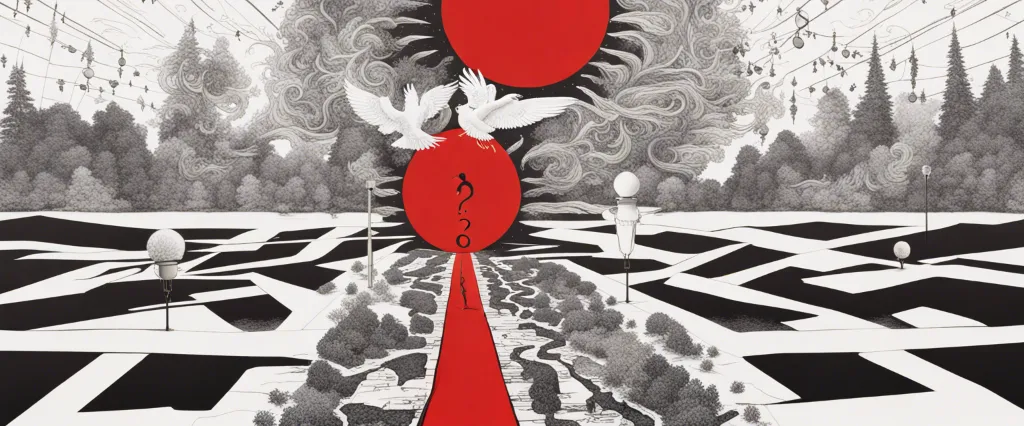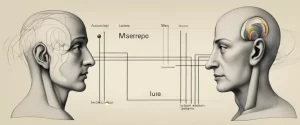
Literature has long been regarded as a powerful medium of social commentary, offering readers a window into different periods, societies, and human conditions. Among the numerous literary works that have captured the essence of their respective epochs, The Red and the Black by Stendhal and Oliver Twist by Charles Dickens stand out as remarkable examples. These novels, despite being written in different countries in the 19th century, delve into the harsh realities of social stratification and the challenges faced by individuals trying to navigate an unjust society.
On the surface, The Red and the Black and Oliver Twist may appear dissimilar in terms of setting, plot, and style. The former is set in France during the Bourbon Restoration, while the latter takes place in Victorian England. Yet, both narratives are intricately woven around central characters who are victims of their social circumstances, exposing the hypocrisy and injustice that permeated their societies. By examining the themes of social climbing, disillusionment, and moral ambiguity present in both novels, we can deduce the authors’ shared intentions to shed light on the dark underbelly of their respective societies.
Stendhal’s The Red and the Black follows the story of Julien Sorel, a young, ambitious teacher from a humble background who aspires to ascend the social ladder. Conversely, Oliver Twist tells the tale of its eponymous protagonist, an orphan who endures a series of adversities while trying to escape the impoverished state he was born into. Despite their distinct narratives, Sorel and Twist share common struggles as they navigate a society where social class is an insurmountable barrier.
Interestingly, both Stendhal and Dickens employ differing literary techniques to convey their messages. The Red and the Black is characterized by its psychological depth, exploring the intricate thoughts and motivations of its characters, while Oliver Twist encapsulates the social critique typical of Dickens’ works – poignant sarcasm, vivid characterizations, and intricate plotlines. These differences in storytelling techniques highlight the authors’ unique perspectives and purposefully cater to their respective readership.
As we embark on this comparative study of The Red and the Black and Oliver Twist, we aim to unearth the underlying similarities and differences between these two remarkable novels. By diving into the intricacies of their social commentary, we will explore how both Stendhal and Dickens bring to light the challenges faced by individuals trapped in an unjust society, further emphasizing their shared goal to expose the frailties and absurdities of human nature during times of turmoil and transformation.
Brief Summary of Two Books
The Red and the Black by Stendhal
The Red and the Black by Stendhal is a novel set in 19th century France and tells the story of Julien Sorel, a young and ambitious protagonist who strives to escape his humble background and social limitations. Julien, a clever and ambitious young man, has a passion for literature and an unshakeable desire for success and recognition.
Julien begins working as a tutor for the de Rênal family and soon becomes involved in an affair with Madame de Rênal, his employer’s wife. Caught up in the excitement of his illicit romance, he sees it as a means of advancing his social status. However, the affair is discovered, and Julien is abruptly dismissed from the family’s employ.
Julien’s romantic dreams are then revitalized when he becomes infatuated with Mathilde, the daughter of a wealthy and influential nobleman. He manipulates his way into Mathilde’s life and the upper echelons of society by using his intelligence and charm. However, Julien’s motivations for his relationship with Mathilde are primarily strategic, as he believes she is the key to his rise in society.
As Julien navigates the complexities of social climbing, he is constantly torn between his desires and his principles. The novel explores themes of love, ambition, greed, and ego, while also delving into the nature of society’s expectations and the conflict between reason and passion.
Ultimately, Julien’s quest for social advancement becomes his downfall as manipulation, betrayal, and personal ambition lead to his tragic end. The Red and the Black is a profound exploration of individualism within a rigid social hierarchy, and it highlights the tensions between personal desires and societal constraints.
Oliver Twist by Charles Dickens
Oliver Twist, written by Charles Dickens, is a novel that follows the life of an orphan boy named Oliver. The story begins with Oliver’s miserable existence in a workhouse, where he endures harsh conditions and mistreatment. After daring to ask for more food, Oliver is apprenticed to an undertaker, but runs away due to mistreatment.
Oliver then finds himself in London, where he meets a young boy named Jack Dawkins, who introduces him to the life of a pickpocket in Fagin’s criminal gang. Oliver, however, proves to be kind-hearted and not fit for a life of crime.
Through a series of events, Oliver is taken in by Mr. Brownlow, a kind-hearted gentleman who believes in his innocence. Unfortunately, Fagin and his accomplices are determined to bring Oliver back into their fold, and they kidnap him. However, Oliver is saved by Mr. Brownlow and his friends, who bring the criminals to justice.
It is revealed that Oliver is actually the son of Edwin Leeford and Agnes Fleming. Edwin’s half-brother, Mr. Monks, was initially plotting to ensure Oliver’s corruption but later has a change of heart and seeks redemption.
In the end, Oliver is able to break free from a life of poverty and crime, finding a loving family, and discovering his true identity. The novel explores themes of social injustice, the corrupting nature of poverty, and the pursuit of redemption amid harsh circumstances.
Comparison between Two Books

Similarities in Reality
Both The Red and the Black by Stendhal and Oliver Twist by Charles Dickens depict the harsh reality of society during their respective time periods. Although set in different countries and eras, both novels explore the themes of social class, poverty, and the limitations imposed by the external circumstances of their characters’ lives.
In The Red and the Black, Stendhal presents a realistic portrayal of post-revolutionary France. The novel follows the ambitions and struggles of Julien Sorel, a lower-class youth attempting to climb the social ladder through sheer intelligence and manipulation. Stendhal vividly portrays the limitations and prejudices faced by Julien, as he is constantly reminded of his humble background and is subject to the whims of the upper class. The novel exposes the harsh reality of society, where opportunities are often limited to those born into privilege, and individuals must navigate an intricate web of social norms and expectations to achieve success.
Similarly, Oliver Twist offers a gritty depiction of 19th-century England, particularly the abject poverty and social injustices prevalent during the time. The novel revolves around the eponymous character, an orphan boy who falls victim to numerous adverse circumstances. Dickens highlights the immense disparities between the rich and the poor, exposing the exploitation and cruelty endured by orphans like Oliver. The novel exposes the grim reality of the workhouses, criminal underworld, and child exploitation, shedding light on the oppressive nature of society for those born into poverty.
Both novels also explore the theme of the social masks individuals wear to navigate their respective societies. In The Red and the Black, Julien must carefully construct his public image to align with the expectations of the bourgeoisie. His intelligence and cunning allow him to navigate the political landscape, but he is always aware of the façade he must maintain. Similarly, Oliver Twist navigates a society where he must conceal his true identity and intentions to survive. The characters in both novels are constantly aware of the need to put on a front and conform to societal expectations, further emphasizing the oppressive nature of their realities.
Overall, The Red and the Black by Stendhal and Oliver Twist by Charles Dickens share similarities in their exploration of the harsh realities individuals face when confronted with oppressive social structures. Both novels shed light on the limitations imposed by society, the disparities of wealth and opportunity, and the masks individuals must wear to navigate their environments.
Divergences in Reality
The Red and the Black by Stendhal and Oliver Twist by Charles Dickens are both classic works of literature, exploring different aspects of reality. While both novels focus on the social conditions of their respective time periods, they diverge in their portrayal of reality and the themes they tackle.
In The Red and the Black, Stendhal presents a more realistic depiction of society during the 19th-century Restoration period in France. The protagonist, Julien Sorel, comes from a modest background and aspires to rise through the ranks of society by using his intellect and charm. Stendhal depicts the harsh reality of class distinction, hypocrisy, and political intrigue. The characters in the novel are driven by their desires and ambitions, constantly navigating the complex social dynamics of the time. The novel delves into the dichotomy between appearances and reality, questioning the authenticity of human behavior and emotions.
On the other hand, Oliver Twist by Charles Dickens focuses more on the moral and social injustices prevalent in early 19th-century England. This novel examines the harsh realities of poverty, crime, and the mistreatment of children in the Victorian era. Through the character of Oliver, a young orphan, Dickens exposes the corrupt nature of social institutions and the exploitation of the vulnerable by those in power. While the story includes some elements of realism, it also employs aspects of melodrama and sentimentality to emphasize the moral lessons and critique societal structures.
The divergence in the portrayal of reality between these two novels lies in their treatment of social issues and the extent of their realism. Stendhal’s The Red and the Black presents a more nuanced and psychologically complex vision of reality, emphasizing the intricate dynamics of human behavior in a stratified society. In contrast, Oliver Twist by Charles Dickens offers a more idealized, yet equally critical, representation of reality, aiming to expose societal flaws and advocate for change through emotional engagement.
In conclusion, both The Red and the Black and Oliver Twist address social conditions and introduce readers to the realities of their respective time periods. While Stendhal’s novel delves into the complexities of human nature and the consequences of social maneuvering, Dickens’s work concentrates more on moral and social injustices within the Victorian era. These divergent approaches to reality make these novels unique in their exploration of the human condition and the societies they depict.

Conclusion
Both The Red and the Black by Stendhal and Oliver Twist by Charles Dickens are highly acclaimed and influential works of literature, each with their own merits. Ultimately, the decision of which book is more worthy of reading depends on personal preferences and interests.
The Red and the Black is a French novel published in 1830 and is considered one of the greatest psychological novels in literature. It tells the story of Julien Sorel, a young provincial man who aspires to climb the social ladder through his cunning and ambition. The novel explores themes of love, social climbing, and the complexities of human motivation. It is known for its intricate character development, psychological depth, and exploration of moral dilemmas.
Oliver Twist is an English novel published in 1838 and is one of Charles Dickens’ most famous works. It revolves around the eponymous orphan, Oliver Twist, who faces poverty, exploitation, and crime in the grim streets of Victorian London. The novel tackles themes of social injustice, poverty, and the resilience of the human spirit. It is praised for its vivid descriptions, memorable characters, and social commentary on the harsh realities of the time.
Both books offer valuable insights into the human condition, societal issues, and the complexities of individuals navigating their respective worlds. The Red and the Black delves into the inner workings of a protagonist driven by ambition and desire, offering a profound psychological examination. On the other hand, Oliver Twist presents a vivid portrayal of social inequality and injustice, highlighting the struggles of the marginalized.
Ultimately, the choice between the two novels comes down to personal taste. If you enjoy psychological depth, complex characters, and moral dilemmas, The Red and the Black may be more suited to your preferences. However, if you are interested in social commentary, vivid descriptions, and a portrayal of societal disparities, Oliver Twist may be the more compelling read.
Both books are considered classics and have made significant contributions to world literature. It could be worth considering reading both if you have the time and interest to explore the works of Stendhal and Charles Dickens in greater depth.



